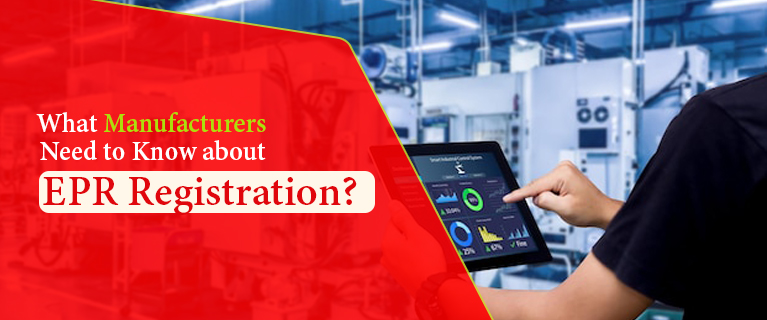EPR Registration In Packaging & Innovations
Extended Producer Responsibility (EPR) is a progressive concept in the realm of environmental sustainability and waste management. EPR essentially mandates producers to take responsibility for the entire lifecycle of their products, from design and production to disposal and recycling. This approach is gaining significant momentum worldwide, particularly in the context of packaging materials. In this blog, we'll delve into the world of EPR registration in packaging, exploring innovative approaches and strategies that companies are adopting to meet their environmental responsibilities.
The Imperative for EPR in Packaging:
Before we delve into innovations in EPR registration, it's essential to understand the significance of EPR in the context of packaging materials. Packaging is an integral part of the global economy, serving various purposes such as protecting products, marketing, and ensuring convenience. However, it also contributes to significant waste generation and environmental impact.
EPR in packaging aims to mitigate the environmental impact of packaging materials by shifting the burden of responsibility from end consumers and municipalities to producers. Producers are required to design and manage packaging that is environmentally sustainable, reduces waste generation, and promotes recycling.
Read Also This - How is EPR Registration Useful for BusinessesInnovations in EPR Registration for Packaging
In recent years, EPR registration for packaging has seen various innovations aimed at enhancing its effectiveness and impact. Here are some of the notable innovations in this space:
1. Eco-Friendly Packaging Designs
Producers are increasingly focusing on eco-friendly packaging designs to minimize waste and environmental impact. Recyclable and Biodegradable materials are used for this purpose. Innovations in packaging design are driving the shift towards more sustainable packaging solutions.
2. Recycling Incentives
To encourage recycling, some EPR programs offer incentives to consumers who return packaging materials for recycling. This can include deposit-refund systems where consumers receive a refund for returning packaging like bottles or cans. Such incentives can significantly boost recycling rates.
3. Advanced Tracking and Reporting
Modern technology is playing a crucial role in enhancing EPR registration and compliance. Producers are using advanced tracking and reporting systems to monitor the lifecycle of their packaging materials. This allows for real-time data collection on waste generation, recycling rates, and the environmental footprint of packaging.
4. Eco-Friendly Materials
One of the key innovations in EPR registration for packaging is the adoption of eco-friendly materials. This includes using recycled content in packaging, reducing single-use plastics, and exploring alternative materials like bioplastics. These sustainable materials are central to reducing the environmental impact of packaging.
5. Consumer Education
EPR programs are increasingly focusing on educating consumers about the importance of recycling and responsible disposal. Consumer awareness campaigns, clear labeling, and information dissemination are essential components of modern EPR initiatives.
6. Collaboration and Partnerships
Companies are partnering with various stakeholders, including recycling facilities, municipalities, and non-governmental organizations, to create effective EPR programs. Collaborative efforts enhance recycling infrastructure and promote responsible packaging practices.
7. Regulatory Developments
Innovations in EPR registration are also driven by regulatory developments. Governments worldwide are enacting and strengthening EPR regulations to ensure that producers adhere to their environmental responsibilities. These regulations set the stage for more innovative and comprehensive EPR programs.
Conclusion
EPR registration in packaging is evolving to address the pressing environmental concerns related to packaging materials. Innovations in this space are transforming the way producers approach their responsibilities, with a strong focus on eco-friendly designs, recycling incentives, advanced tracking, and the use of sustainable materials. Collaboration, consumer education, and regulatory developments are further driving these innovations.
As companies and governments continue to prioritize environmental sustainability, we can expect more groundbreaking innovations in EPR registration for packaging. These innovations are not only beneficial for the environment but also align with the growing consumer demand for eco-friendly products and responsible packaging practices. EPR in packaging is not just a compliance requirement; it's a driving force behind a more sustainable and circular economy.



Comments
Post a Comment